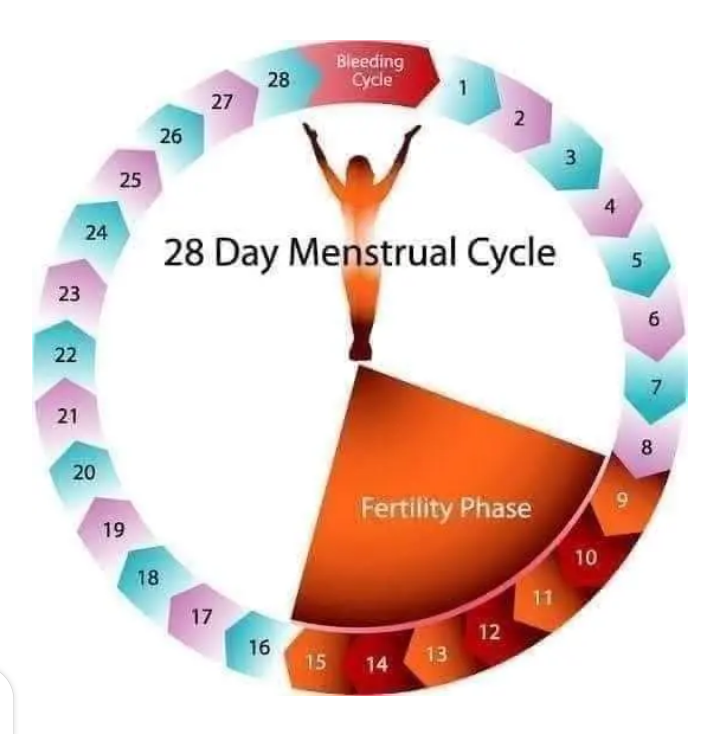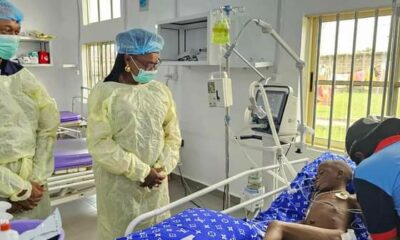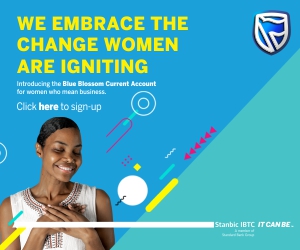Health
Understanding your Ovulation Cycle as a woman


As a woman, Ovulation is the period when your ovarian gland release matured follicle egg into your Fallopian tube waiting for SPERM to fertilize it. So when we talk about the ovulation period, it is simply the time a woman’s eggs are ready to get fertilized by a man’s sperm. And if not fertilized, the eggs get discharged as blood hence the menstrual period time.
Ovulation normally occurs every 14th days of each cycle, Most time when a woman Menstruate on 5th of December, there’s a tendency she would still menstruate on the 30th of December. That doesn’t mean she is having her period twice in a month. Such woman’s Menstrual cycle length is called the 25days cycle. It Is a very simple procedure, just start your day count from the first day of bleeding to the number of your menstrual day cycle which tells you your next period of Menstrual bleeding.


To Know how to count your cycle date, follow this example. Now, let’s say 5th is first day of your menstrual bleeding, just count from 5th as your number 1 day to the 28 day. The date which it lands on is your next menstrual date, That is using the 28 day cycle. If yours is 25 days cycle or 30 days cycle, just follow the same procedure.
Average range of Menstrual cycle length is 28days, which mean any candidate that belong to this cycle length must definitely ovulate between 12th to 16th day of her cycle.
Any woman with 30days Menstrual cycle length must definitely ovulate on 14th to 18th day of her Menstrual cycle. Is also a simple estimation, Just add two days before and after ovulation purposely because there is a chance for pregnancy to occur two days after ovulation.
Any woman with short cycle length which is 21 Menstrual cycle length could ovulate during her Menstrual period or soon after her Menstruation days.
Those 21days candidate often experience ovulation mucus during menstruation,likewise often develop orgasm while they are menstruating. In general, they have similar ovulation symptoms that 28days and 30days candidate have.
Any woman with 35days which is long Menstrual cycle length could also ovulate between 12th to 18days of cycle.
All woman should aware that without ovulation,the chance of Pregnancy is low.
If your Menstrual date keeps changing every menstrual cycle, that doesn’t mean you are having irregular Menstrual cycle. Most women get confused in this situation.
If you really want to figure out your menstrual cycle length, you need to focus on date you had your period at least for good three months, Get yourself a calendar and start cycling the first day Menstrual Bleeding, cycle the day you also see another period bleeding. Make your estimation on numbers of days in between the first day bleeding to the day before you see another Menstrual bleeding. OR BUY AN OVULATION PREDICTOR KIT.
But If you are 28days cycle length and suddenly your cycle changes to 35days cycle length, Definite you are suffering from an irregular Menstrual cycle.
If you are 30days cycle length and suddenly change to 21days cycle length,that indicate irregular Menstrual cycle.


SIGN AND SYMPTOMS OF OVULATION.
Most women get confused toward Cervical mucus, if you have never see any cervical mucus in your private part, that doesn’t mean you are not ovulating but you must ensure that you expect one or two signs and symptoms of ovulation. Here are the signs involved.
1.Cervical Mucus.
2.BREAST pain and tenderness.
3.Slight abdominal pain
4.Rise in body temperature.
5.Reach orgasm (Feeling like having sex)
6.Vagina spotting with cervical mucus.
7.Mood change.
Ovulation is the period to get pregnant no matter how much your HORMONE and uterus is healthy. You can follow up your ovulation period avoid unwanted pregnancy.


All images gotten from Stock images.
Health
First Lady Oluremi Tinubu Flags off Free to Shine Campaign Against HIV/AIDS, other STDs in Enugu
Gov. Mbah, wife, pledge collaboration, reports SANDRA ANI


Nigeria’s First Lady, Senator Oluremi Tinubu, has flagged off the Free to Shine Triple Elimination Campaign, an initiative of the Organisation of African First Ladies for Development, OAFLAD, and global partners to eradicate HIV/AID, Syphilis and Hepatitis by 2030.
Flagging-off the campaign at the International Conference Centre, Enugu, on Tuesday, the founder of the Renewed Hope Foundation, Senator Tinubu said the initiative was an imperative, since Nigeria bore the highest burdens of HIV infection in sub Saharan African due to her large population.
“We launched the campaign in January 2025 and have flagged it off in five political zones of North Central, North East, North West, South South and South West. Today, we have flagged off the campaign in southeast to complete the Free to Shine campaign.
“Our aim is to reduce HIV infection among women, prevent mother and child transmission and ensure that every child born with it gets the necessary treatment,” Tinubu said.


She thanked Governor Peter Mbah of Enugu State and his Wife, Mrs. Nkechinyere Mbah and the people Enugu State for the warm reception accorded to her and her entourage. During her two-day working visit.
Throwing his weight behind the campaign, Governor Mbah, said his administration had taken health seriously because a healthy population is the foundation on which progress is built.
“Here in Enugu State, we have aligned our healthcare priorities with the vision of the ‘Free to Shine Campaign.’
“By September, we would have completed and fully equipped 260 Type 2 Primary Healthcare Centres in all wards — each with accommodation for health workers to ensure round-the-clock care.
“We have also strengthened our secondary and tertiary healthcare systems and broadened access to health insurance and emergency services, especially for the most vulnerable.
“These efforts are already yielding results — with a significant reduction in maternal, under-five and infant mortality.
“But we know the work is not done. No health system can thrive in isolation or assume it no longer needs support. This is why we embrace the goals of the ‘Free to Shine Campaign’ — goals that seek to eliminate stigma, expand access to HIV treatment, and, most importantly, end mother-to-child transmission of HIV,” he stated.
The First Lady of Enugu State, Mrs Mbah, commended Senator Tinubu and OAFLAD for providing leadership against the scourges of HIV/AIDS and other sexually transmitted diseases.
“I commend the First Lady, Her Excellency Senator Oluremi Tinubu, for demonstrating leadership and commitment to the health and well-being of Nigerians.
“As 2023 data from the Joint United Nations Programme on HIV/AIDS (UNAIDS) shows, Nigeria has one hundred and forty thousand (140,000) children aged 0 – 14 living with HIV, with twenty-two thousand (22,000) deaths each year. This is an enormous public health burden with vast social and economic implications. So, the ‘Free to Shine Campaign’ is indeed a creation of necessity,” Mrs. Mbah said.
She expressed total support for the initiative, noting that “collaboration is the driving force of change and development.”
“When we collaborate, problems that seem intractable are solved. So, I am confident that the goals of this campaign will be achieved in Enugu State, in Nigeria – and across Africa. What is required is whole-hearted dedication,” she concluded.
The event featured a general overview of the Free to Shine Campaign, by the Executive Secretary for OAFLAD, Dr. Nardos Berhanu, testimonials and experience sharing by persons living with HIV/AIDS, drama presentation by Members of the National Youth Service Corps, and goodwill messages by development partners, among others.
Meanwhile, the Nigerian First Lady was conferred with the chieftaincy title of Ugosinamba (Precious Jewel/Eagle from another kingdom) by the Enugu State Council of Traditional Rulers, citing her love for Enugu and service to the nation and humanity.
Health
Enhancement of Military Health Services: Matawalle Meets U.S. Deputy Assistant Secretary of Defence for Health


In a significant move to bolster Defence Health Services and strengthen the partnership between the United States and Nigeria, the Minister of State for Defence, H.E. Dr. Muhammad Bello Matawalle, met with a U.S. delegation led by Dr. David Smith, Deputy Assistant Secretary of Defence for Health.
A statement endorsed by Henshaw Ogubike, director of Information and PR at the Ministry, shows that the the meeting focused on enhancing the existing collaboration in defence health between the two nations, which has previously facilitated the establishment of high-tech laboratories in Nigeria.
The Honourable Minister commended the U.S. for their efforts and urged for the expansion of these medical facilities beyond Abuja and Lagos to reach more derserved regions.
Dr. Matawalle emphasized the strategic integration of health services to improve the welfare of the Armed Forces of Nigeria, stating, “A healthy military is the backbone of a strong nation.” He reiterated the government’s commitment to ensuring that military personnel have access to top-tier healthcare services and facilities. To this end, he called for an increase in the defence budget allocated to health, viewing it as a vital investment in the nation’s future and stability.
Furthermore, the Minister highlighted that these initiatives align with Nigeria’s broader commitment to enhancing military readiness while addressing public health challenges that affect both service members and the civilian population. He noted that President Bola Ahmed Tinubu’s administration is dedicated to improving healthcare for military personnel and civilians, recognizing healthcare as a cornerstone of national security.
In his remarks, the Permanent Secretary of the Ministry of Defence, Dr. Ibrahim Abubakar Kana mni, stated that this initiative would positively impact military health and serve as a model for strengthening Nigeria’s overall healthcare system. “This collaboration marks a turning point for Nigeria’s defence health system,” he asserted.
Dr. Smith praised the Minister for his proactive approach to health readiness, underscoring the critical connection between health systems and military effectiveness. “Health is as crucial as any weapon system in ensuring military success, and we are committed to supporting Nigeria’s efforts to enhance its defence health system,” he remarked.
The U.S. delegation is in Nigeria to further advance initiatives aimed at sustaining progress against HIV, accelerating efforts towards the United Nations’ 95-95-95 goals, and working towards the elimination of HIV as a public health threat by 2030.
Health
Neptune Prime publisher to unveil cancer clinic, school, foundation for late journalists’ families as son weds in Yobe


The publisher of Neptune Prime newspapers, Dr Hassan Gimba, has announced plans to commission three major projects in his home state, Yobe State
In an invitation letter sent to newsmen on Wednesday, the publisher disclosed that the event, which is scheduled to take place on August 31, is coinciding with the wedding Fatiha of his son, Barrister Suleiman Gimba.
According to the letter, the wedding Fatiha will take place by 11:00am at the residence of Mohammed Babate, Behind Water Board, Army Barracks, Potiskum.
“Immediately after the wedding Fatihah, we will be commissioning the Hafsatu Gimba Ahmed Memorial School located at VIO Street, Unguwar Jaji, Potiskum.
“This institution is dedicated to the memory of my late mother, aiming to serve the educational needs of our community,” the letter noted.
Dr Gimba added that as part of the launch programme, the Abubakar Monja Lifeline Foundation for Late Journalists’ Families, which he founded to cater to the families of journalists who have passed away, will be empowering youths it trained in tailoring and plumbing.
“Additionally, I would like to invite you to inspect the ongoing construction of the Lami Fatima Babare Cancer Outreach and Clinic situated nearby, also in Unguwar Jaji.
“The clinic is an initiative of the Lami Fatima Babare Cervical Cancer Foundation, which was founded in 2020 – in memory of my late wife, Lami Fatima Babare – to provide medical services and referrals to cancer patients,” the letter noted.
























